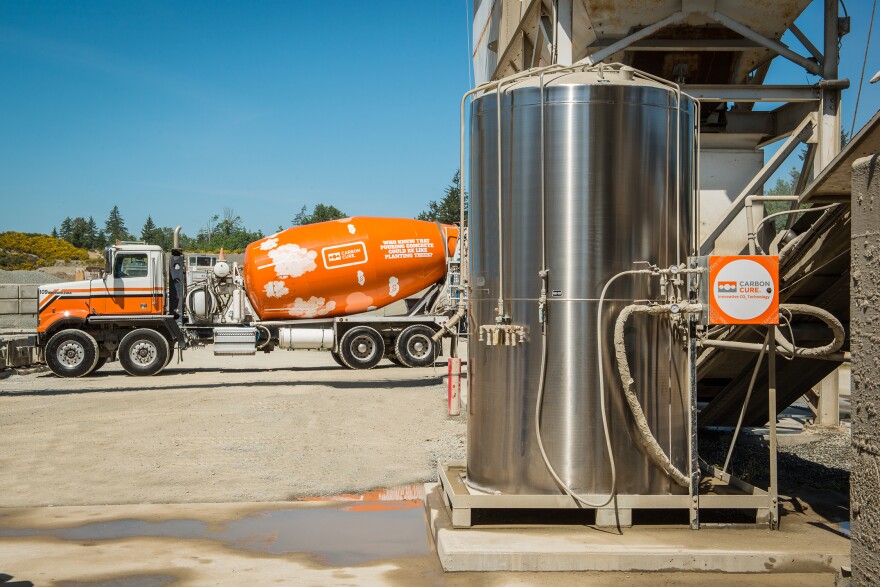Concrete is becoming greener thanks to an innovative idea from Canada. The technology injects carbon dioxide into concrete and the mineralization process makes the concrete more durable while also reducing its carbon footprint.
Ozinga, a concrete company with plants in the Midwest and Florida, was one of the first to use the Carbon Cure technology. Ozinga Vice President of Research and Development Ryan Cialdella gets his C02 from a fertilizer plant and says, "I want to leave the world in a better condition than when we first got here."
Carbon Cure's Director of Sustainability Christie Gamble explains how the process works: "Our technology is installed in a concrete plant. That technology injects the C02 which is liquified into the concrete while it's being mixed. And what happens is a chemical reaction where the C02 turns into a mineral (solid calcium carbonate)." The reaction makes the concrete even stronger, as explained in this video.
https://www.youtube.com/watch?v=tuae5LQ8VU8
Carbon Cure says it has the potential to reduce up to 500 million tons of C02 across the globe.
One example is a 12-story building in Atlanta, which Gamble says saved 1.5 million pounds of C02, the equivalent to the same amount of C02 that 800 acres of forest land would be able to sequester over the course of a year.
"From a sustainability perspective, there really is nothing more sustainable than building to last," Gamble says. "Concrete has so many positive attributes to it and there's so many reasons why concrete is the most abundant manmade material on the planet. The issue is simply that the production of cement does result in carbon emissions and that has been a particular sustainability issue that has been front and center in the industry."
A Dayton area company, Snyder Brick & Block, used the Carbon Cure technology for awhile but discontinued it. Mark Snyder told WVXU Carbon Cure is a great idea but in the end it was cost-prohibitive.
Snyder says his company had to purchase the C02 from businesses like AirProducts, an industrial gas company, and also had to pay fees associated with the developer. He then had to pass those along to the end user, who was unwilling to pay any additional cost on their construction projects.

Ozinga's Cialdella says it's all about the situation and the volume. "You know, the model must make sense in terms of your organization and being able to produce enough to be able to offset the monthly cost of the equipment."
Ozinga is using this technology in six locations and is considering expanding it within its network. Carbon Cure's Christie Gamble says the company's technology has been installed in more than 130 plants in the U.S., Canada and Singapore.



